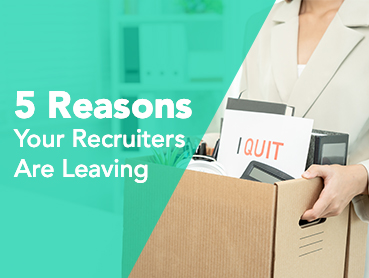8 Fair Hiring Practices You Should Be Using

To build a diverse workforce and hire top talent in your industry, prioritize creating a fair hiring system.
Fair hiring focuses on hiring a candidate solely based on their skills and expertise – not based on their ethnicity, gender, religion, age, or physical abilities. It’s an essential element of your organization’s diversity and inclusion policy, ensuring there’s no discrimination during the hiring process.
Using fair hiring practices, you can build a diverse team with different backgrounds, experiences, and perspectives. You’ll attract and retain top talent.
To help your recruitment process, here are eight fair hiring practices you should be using.
1. Write inclusive job descriptions
Despite your best intentions, some job descriptions include gender, race, or age biases that can push top talent away, leaving a bad impression on your business. When writing your next job posting, focus on what your word choices may be telling potential candidates.
To make sure descriptions are inclusive, try the following:
- Using inclusive language like “they,” “person,” or “individual” to avoid bias.
- Include your organization’s equal employment opportunity (EEO) statement.
- Convey how your selection process works and the tools or processes you have in place to overcome bias throughout the hiring process.
- Use tools like Textio or The Gender Decoder to check your descriptions for bias.
2. Create a diverse hiring team
Creating a diverse hiring panel brings a varied set of perspectives into the hiring process. By including team members of underrepresented groups in the hiring team, you’ll gain new insights and perspectives to help limit the impact of bias.
3. Follow a standardized interview process
Are interviews and questions conducted with consistency? To remove bias from your hiring practice, structure your interviews with consistency for every applicant. Start by creating a standardized list of interview questions your hiring panel can read from. These questions should be limited to topics directly related to the open position you’re hiring for.
You could also create a grading scale or scoring system in advance to ensure all applicants are fairly assessed for their interview responses.
4. Look at internal development or promotions
Don’t overlook the talent that exists right under your nose. An open position could be an opportunity to develop or promote candidates internally and exemplify how your brand prioritizes inclusion.
Make employees aware of new open positions and provide them with the opportunity to apply in advance. Then look at their transferable skills when making your hiring decision.
5. Try blind hiring practices
It’s easy to get caught up in stereotypical roles and biases. You might not even be conscious of them.
By implementing blind hiring practices, you can remove some of these biases caused by gender, age, race, etc.
Here are a few tips to implement a blind hiring practice:
- Remove any demographic information (like age, race, or gender) from a resume or cover letter.
- Create a standardized application for applicants to complete that only includes relevant skills and their professional experience.
- Implement resume screening software. Learn about this in the next section.
6. Use resume screening software
Resume screening software like Arya helps you reduce unconscious bias in the applicant selection process. You get more diverse candidates in your pipeline.
Screening software can scan thousands of applications faster than any recruiter or hiring manager to identify the best applicants without being influenced by information like gender, age, or race.
7. Focus on skills and qualifications
To keep your recruitment process fair, focus on the specific skills and qualifications a candidate needs to perform the role. Use the interview to ask questions about their experience and soft skills that apply to the open position. Then implement assessments to test for both technical skills, soft skills, and competencies.
8. Offer employees unconscious bias training
Whether we realize it or not, humans are inherently biased based on our unique experiences and perception of the world. Like it or not, we learn biases from our parents, friends, and the media that can influence our decisions.
Unconscious bias training forces your hiring team to acknowledge and manage these biases to prevent them from impacting their hiring decisions.
Frequently asked questions
What are unfair hiring practices?
Unfair hiring practices are any aspects of your recruitment process that discriminate against specific groups of people. These practices could include:
- A lengthy or drawn-out hiring process
- Ambiguous or bias job descriptions
- Too many interviews
- Not following a structured interview process
How do you write an inclusive job ad?
To write an inclusive job ad, use inclusive language that encourages all qualified candidates to apply. Examples include:
- Remove gender-coded words like “sensitive,” “affectionate,” “nurture,” “aggressive,” “dominant,” and “assertive.”
- Eliminate racial bias by not mentioning race, national origin, or phrases like “strong English-language skills.”
- Avoid phrases like “young and energetic” or “recent college grads” to appeal to older and experienced workers.
- Mention accommodations like flexible hours and work-from-home policies that appeal to workers with disabilities.
Does blind hiring increase diversity?
Implementing blind hiring in your recruitment process allows you to be more objective while increasing workplace diversity. By eliminating biases around race, gender, and age, you can evaluate a candidate solely for their skills, knowledge, and potential to succeed.
Why should interviews be standardized?
Standardizing your interview process eliminates the potential for bias and allows you to base hiring decisions on skills and experience. By asking applicants a standard list of questions, you can evaluate and compare answers to determine which candidate would be the best addition to your team.
Standardization creates consistency in the interview process and helps you identify required skills for the job. A standardized process reduces hiring biases, allows you to make faster hiring decisions, and creates a better experience for your candidates.
Ready to start hiring fairly?
If you want to become a more diverse team as the organization grows, start that dialogue with those in your candidate pool. Be the first to broach the topic. The candidates that will fit your culture and help you on your path will respond!
At Leoforce, we recognize the need for your organizations to hire fairly, make data-backed hiring decisions, and limit biases in your recruiting processes. Our AI recruiting platform, Arya, continues to get smarter over time, minimizing human bias and gut-feel reactions while accelerating diversity initiatives.
Get a free demo to discover how Arya identifies, analyzes, and sources candidates who are the right fit.





